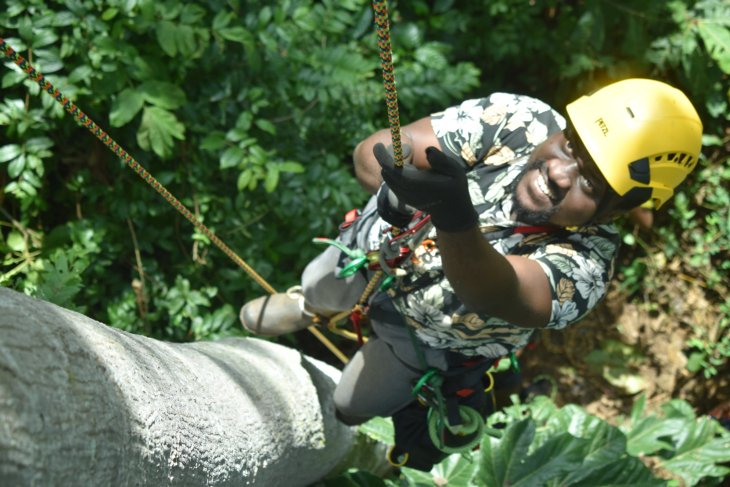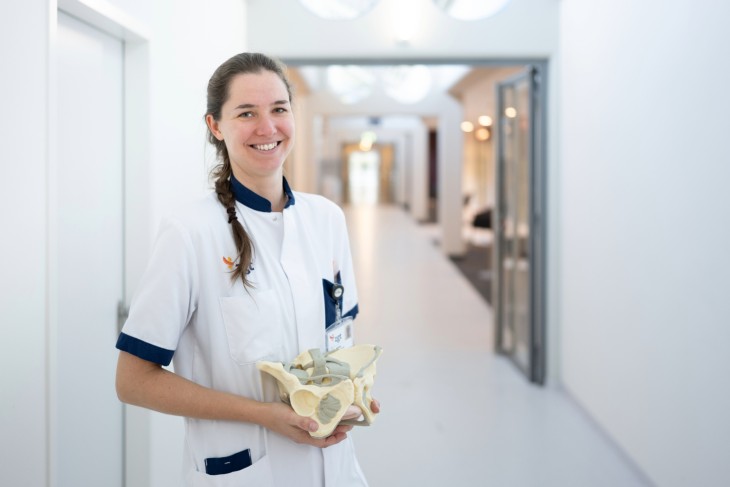Across thousands of images like this, researchers search for patterns in the life cycles of trees: when leaves bud, when flowers bloom, and when fruits ripen or drop. This rhythm of nature is known as phenology. It is linked to events like rainfall, temperature, and available sunlight. And when the phenology shifts, everything from elephant migrations to agricultural production can change as well.
Tracking time through leaves and flowers
That’s why researchers from the University of Twente’s Faculty ITC, in partnership with scientists from the University of Energy and Natural Resources in Sunyani, Ghana, have launched GhanaPhenoPulse. This citizen science project aims to create the most detailed picture yet of seasonal changes in Ghana’s forest canopies.
“We need to know when flowers bloom and when leaves fall,” says Bismark Ofosu-Bamfo, one of the researchers. “That timing is changing. But without consistent, long-term data, we can’t say how, or why.”
Traditionally, phenology research relies on field visits. As regularly done by involved researchers Daniel Yawson and Caleb Mensah from the University of Energy and Natural Resources in Sunyani. But walking into the forest every day to look up at tagged trees is not always possible, especially when you're studying 1,700 trees across 186 species.
A view from above
Instead, the team installed cameras high in the forest canopy. These capture images through the day, creating a rich visual record over time. But with thousands of pictures piling up, there was a new challenge: how to process it all.
This is where citizen scientists (like you) step in. Through the Zooniverse platform, anyone, anywhere in the world, can help analyse the images by labelling what they see: fresh leaves, drying leaves, flowers, or fruit. Already, more than 1,000 volunteers have joined in. “It’s not just about getting help with the workload,” says Raul Zurita-Milla. “Volunteers become more aware of climate change through the process. They ask questions, make discoveries, and sometimes catch things we missed.”
Data, droughts, and digital tools
The long-term aim of GhanaPhenoPulse is to forecast phenological changes in tropical forest. Can we predict when plants will fruit, or when flowering will fail? That could help ecologists protect endangered species and assist farmers who time their planting based on seasonal cues. But getting there is complex. “Matching leaf and flower events to local climate data is a big challenge,” says Ofosu-Bamfo. “The nearest weather station might be an hour away. But that local variation matters.”
Machine learning offers promise, but only with a strong dataset. GhanaPhenoPulse aims to produce a consistent and reliable dataset to train algorithms using the labelled images, without replacing the people doing the work. As ITC assistant professor Rosa Aguilar Bolivar notes: “You need human eyes first, before you can teach a computer what to see.” Support from initiatives like the Lacuna Fund plays a vital role in enabling this kind of open, inclusive data development.
Traditional knowledge meets machine learning
The researchers are not just looking at the data provided by the pictures. The project blends modern tools with local perspectives gathered from interviews. “For example, some communities said new leaves appear just before Easter,” explains Ofosu-Bamfo. “That gives us a clue on when leaves would appear in the past. Somewhere around March or April.”
Combining camera images, interviews to elucidate traditional ecological knowledge, satellite data, and weather records, the team is building a comprehensive picture of plant phenology. But they’re not stopping there. By using this rich dataset to build a machine learning model, the researchers aim to predict when key events like flowering or fruiting will happen. This would make it possible to forecast how plants respond to changing weather patterns, including extreme droughts.
“As climate change brings more uncertainty, we need to move from simply observing change to anticipating it,” says Ofosu-Bamfo. “Plants can survive a day without water. But longer dry spells change everything: growth, flowering, and fruiting. If we don’t understand those changes, we can’t respond. That’s why prediction is the ultimate goal.”
Get involved
GhanaPhenoPulse is still open for anyone to join. You don’t need a background in botany, just curiosity and a few spare minutes. With every click, you’re helping science, supporting local researchers, and becoming part of a global effort to understand our changing planet. You can join the project and contribute via Zooniverse.




